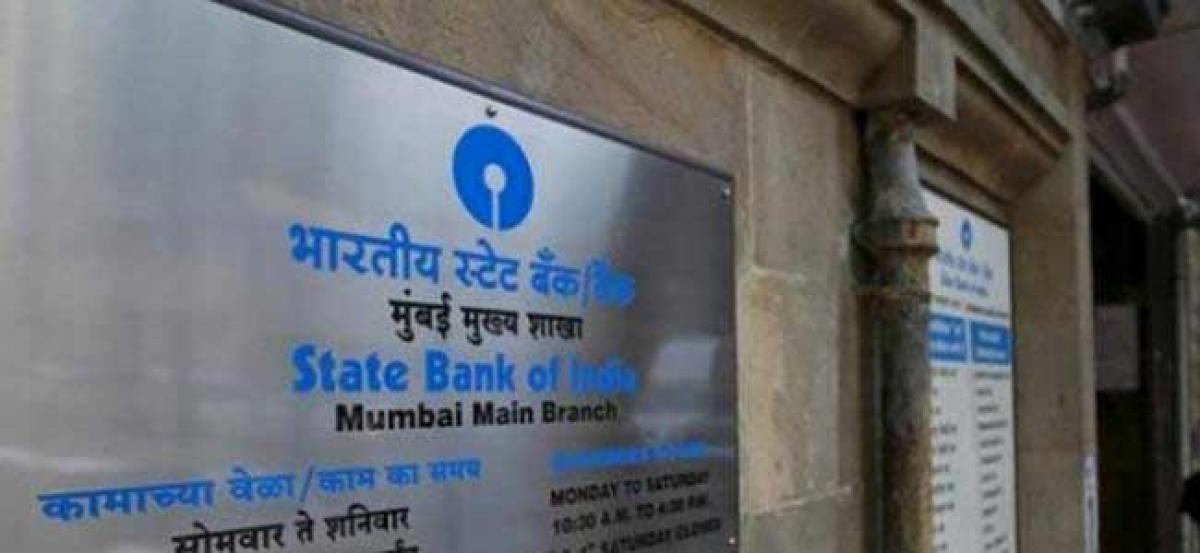Live
- Pawan Kalyan to Campaign for NDA Alliance in Maharashtra
- Eight killed, five injured in Nepal's traffic accident
- Technical snag grounds PM Modi's aircraft in Jharkhand
- Divya Pillai FL from ‘Bhairavam’ unveiled
- Tension in Lagcherla as BRS Leaders Allegedly Incite Landless Poor
- India vs South Africa 4th T20I Today: Know About Venue, Squad, Start Time, and Live Streaming Details.
- Abhishek says ‘sounds cool’ to be making a film about ‘someone who has 100 days to live’
- Samsung to buy back stock worth $7.16 billion to boost shareholder value
- ICC Champions Trophy 2025: Trophy tour to start from Islamabad on November 16; to travel to Karachi, Lahore and Rawalpindi
- Nazara Technologies sees Q2 profit decline 33 pc to Rs 16 crore
Just In

A favourable demand-supply balance of G-secs by increasing demand through reducing their supply and also lowering downward rigidity on operative overnight rates, RBI can ensure better transmission and help government save Rs 10,000 crore annually on interest cost, says a report. Such an innovative mechanism to manage liquidity, which will require amendments to the Reserve Bank Act, will push down
Mumbai: A favourable demand-supply balance of G-secs by increasing demand through reducing their supply and also lowering downward rigidity on operative overnight rates, RBI can ensure better transmission and help government save Rs 10,000 crore annually on interest cost, says a report. Such an innovative mechanism to manage liquidity, which will require amendments to the Reserve Bank Act, will push down interest rates and increase bond prices, says a report by SBI Research.
"The RBI needs to avoid disruptive modes of liquidity absorption like CRR hike instead it should ensure that there is favourable demand-supply balance for government bonds or G-secs. This can be achieved by increasing the demand for bonds, simultaneously reducing the supply of bonds and reducing the downward rigidity on operative overnight rates," SBI's chief economist Soumyakanti Ghosh said in the report. "This will have the desired objective of pushing down interest rates through an increase in bond prices which will help government save Rs 10,000 crore in interest payments alone," Ghosh said.
One of the ways to achieve this can be the standing deposit facility (SDF) recommended by the Urjit Patel panel, Ghosh said. But to achieve these, the RBI Act needs to be amended so that the way repos and reverse repos are conducted now can be changed. "To increase the demand for bonds we should have necessary amendment in the RBI Act so that reverse repo and term reverse repo operations are completely non- collateralised. This is needed as securities obtained under reverse repo are eligible for SLR, it will thus ensure an overall increase in the demand for bonds," he argues. Secondly, there should be a cap on absorption of liquidity. For instance, RBI can cap the combined limit of term reverse repo and reverse repo at 1 per cent of NDTL.
Uncollateralised absorption by RBI will pave the way for government to suck out additional liquidity at lower cost through SDF through which it can set the SDF rate lower than reverse repo rate. "If implemented it will help government and banks in multiple ways. For example, if the SDF rate is fixed lower than MSS rate, this will save around Rs 10,000 crore in interest cost to the government," he said. The RBI had put downward rigidity on overnight rates by reducing corridor between repo and reverse repo from 100 to 50 bps in the April 2016 policy.
Though this helped stabilise the interest rates, it effectively created downward rigidity for lower part of the corridor. "The changes in the RBI Act is also needed as our central bank is not permitted to float its own securities," the report notes, adding as RBI inventory of G-secs gets depleted and it is unable to increase the supply due to fiscal ramifications, this facility is a must.
On the need to make reverse repo and term reverse repo operations completely non-collateralised, Ghosh says as lending to central bank has no credit risk, there is no need to provide G-secs as collateral when a market participant places its funds with RBI. Also, since securities obtained under reverse repo are eligible for SLR (statutory liquidity ratio), it will thus ensure an overall increase in the demand for bonds. Also, if SDF and reverse repo are made collateral free this will lead to a lower SDF rate than the repo rate, which in turn ensure a lower supply of G-secs.

© 2024 Hyderabad Media House Limited/The Hans India. All rights reserved. Powered by hocalwire.com







